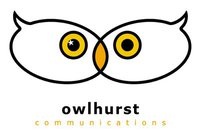 Jedd Cokayne, Business Unit Director at The MediaShop
Jedd Cokayne, Business Unit Director at The MediaShop

Jedd Cokayne says not all brands are created equal and that a distinctive brand will be the most successful during 2020.
As we move into the latter part of the year, we reflect more and more on the events that have taken place that determine how we live our lives, do business, how we conduct ourselves when leaving the house and consider safety procedures we have to follow in order to stay safe and healthy. The virtual watercooler chat is all about social distancing, sanitising, modulated education and the main topic of course is what the remainder of 2020 will look like. For me, the biggest changes are around the inability to interact with my friends and family, work colleagues and clients and not having the opportunity to go to the bush. Cabin Fever is truly setting in.
While I ponder over when I will ever get to the bush again and the fond memories I have of my travels, I think of one of the most iconic silhouettes on the African landscape – the Baobab tree, also known as the Tabaldi, Bottle tree, Upside Down Tree or the Monkey Bread Tree. The Baobab can grow up to heights of 20m and carbon dating indicates that it may live to be a staggering 3000 years old.
With an entire ecosystem within it from birds nesting in the branches to baboons devouring the fruits, Bush Babies drinking the nectar from the flowers and elephants eating the bark, this is one of the most distinctive trees in Africa easily recognisable by travellers around the world.

This distinctiveness leads me to the content of this article and the upward battle all brands are facing in 2020 due to the COVID-19 Pandemic. We have read so much about marketing in a recession, how brands are reacting to new consumer behaviours and potentially what the new norm is, but what many brands are forgetting is the one thing that makes them stand head and shoulders above their competitors – that which creates their distinctiveness and potentially further develops brand loyalty.
All brands like to think they are unlike any other, but that’s usually not the case. What does make a brand unique are its distinctive brand assets. These act as an invaluable shorthand for a brand, it’s a cue for consumers to bring all their previous experiences and associated meaning of a brand to the fore and influence that purchase decision.
Now more than ever, distinctiveness is key to helping a brand stay afloat in very tough economic conditions. We forget how important various brand assets are in keeping the brand alive in the eyes of the consumer whether it is a name, a slogan, unique value proposition, visual characteristic or a logo, all of these things make a brand unique.
But how do we determine what a brand asset actually is from the various brand elements within a company? Each brand element needs to be unique, authentically associated and well known to consumers while representing the brand. Assets seek to reinforce the brand’s core values and convey the benefits it promises to deliver.
While brands are trying to develop new ways of working because of the pandemic, this is an ideal time for them to consolidate and identify those distinctive assets that will not only help them survive the current situation but also reinforce it and become competitive again in the future.
- Ruthlessly audit your existing brand elements or what you perceive to be distinctive. Remember to include historical icons etc that may still ring true for the brand.
- Your consumers are a great gauge of what is distinct about your brand, get feedback from them and collect data that can help in the future.
- The faster people make the association between individual brand assets and a brand, the more likely your market share will grow and not just your category awareness.
The below table is from the Ehrenberg Bass Institute (EBI) for Marketing Science and a great way of assessing brand assets and determining if they are worthy of highlighting or casting aside.

Once those brand assets have been identified and developed, leverage them and reap the rewards.
- Use them consistently across all marketing campaigns, channels and touchpoints available.
- Evaluate them often and rely on real feedback from your target market.
- Keep an eye on competitors and ensure you are agile. They are happy to hijack your ideas especially if they aren’t protected.
- Be smart when you introduce a new brand asset and ensure you run it with the brand name until you can measure the brand association.
- Take ownership of the brand.

Within a short space of time the marketing rule book has changed and what worked yesterday may not necessarily work today or tomorrow. The key to success is adaptability and the reliance on your brand’s distinctiveness to influence the buyer’s journey.
We previously mentioned that consumer behaviour has dramatically changed over the past four months but by utilising brand assets correctly with nurtured messaging at a decision-making juncture, will help consumer’s link the benefits and value propositions of your brand at the point of purchase and help protect your brand through the turbulent waters of 2020.
So, as we face this one day at a time spare a thought for the Monkey Bread Tree and all the changes they have had to endure and adapted accordingly over the thousands of years they have been around.

